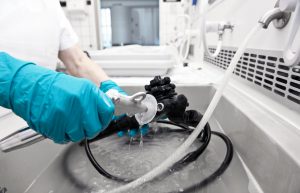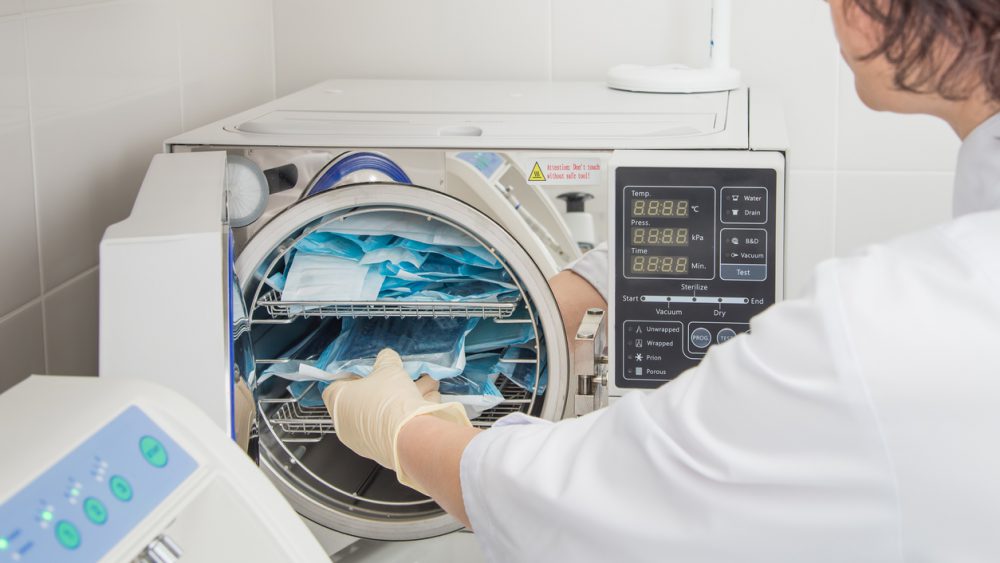Patients are admitted to the hospital expecting to receive care and return to good health. Yet on any given day, roughly one in 25 hospital patients suffers from a healthcare-associated infection (HAI) that puts their health in jeopardy.1 The extra per-patient cost of several common HAIs ranges from $1,000 to $45,800,2 an added expense that can eat away at a hospital’s operating margin. According to Becker’s Hospital Review, the “total direct, indirect and nonmedical social costs of HAIs are estimated at around $96 billion to $147 billion annually, including loss of work, legal costs and other patient factors.”2
Failing to protect patients from HAIs can also lead to other consequences, such as Medicare penalties for a high prevalence of preventable infections. In 2016, the Association of American Medical Colleges estimated that the 769 hospitals identified as having high infection rates collectively lost about $430 million, due to the penalties imposed by the Centers for Medicaid and Medicare Services Hospital-Acquired Conditions Reduction Program.3 Therefore, infection prevention must remain a top priority for providers, both for patient safety as well as financial stability. But whose responsibility is it to keep infections at bay?
Infection prevention and control is a team effort. Nearly everyone in the hospital must be involved—and that includes the supply chain. Prevention strategies should range from making certain that patient-facing staff are following proper hand hygiene procedures to facilities staff ensuring optimal environmental hygiene, from clinicians and pharmacists supporting antimicrobial stewardship to the proper sourcing and use of instruments by physicians, sterile processing staff, and the supply chain. An organization-wide, collaborative culture grounded in high reliability concepts (such as a preoccupation with failure and sensitivity to operations) is key to minimizing or eradicating preventable infections.
Too frequently, the supply chain isn’t considered an integral stakeholder in this effort. However, a product’s ability to affect outcomes—and the supply chain’s role in sourcing that product—is an important consideration. While the clinical benefits of a product merit consideration in and of themselves, the financial implications of such outcomes into the total delivered cost of an episode of care make it an even more important consideration.

For example, take surgical instruments. Most hospitals have a sterile processing department that is responsible for decontaminating, preparing, sterilizing, and controlling the surgical instruments and equipment used in the clinical areas of the hospital, including the largest revenue-generating department, the operating room (OR). Breakdowns in sterile processing procedures can not only lead to significant patient safety issues but also such financial hurdles as OR case delays and shutdowns. The latest regulatory changes released from The Joint Commission require that sterile processing departments understand the cleaning and reprocessing steps of medical devices in order to ensure that the device is processed according to the manufacturer’s instructions for use (IFU). In its May 2017 article, The Joint Commission found that “from 2013–2016, immediate threat to life (ITL) declarations directly related to improperly sterilized or HLD (high-level disinfection) equipment increased significantly. In 2016, 74 percent of all ITLs were related to improperly sterilized or HLD equipment.”4 This is a significant percentage.
It is every hospital’s responsibility to ensure that the manufacturer’s IFU are available and that technicians have the training and competency required to follow them. In turn, the supply chain department must be sure that the products and equipment they source have been validated for the hospital processes being used for sterilization. This requires collaboration between the supply chain, perioperative clinicians, and infection control and sterile processing professionals.
But supply chain collaboration with outside departments should not stop there. In today’s value-based environment, hospitals should be working toward a structure that funnels all purchasing decisions through a formalized, multidisciplinary committee of hospital stakeholders and subject matter experts. Clinical input should be shared through these value teams, which are ideally part of a larger clinical integration strategy. This methodology ensures that product (or service) purchasing decisions are made based on evidence that demonstrates the clinical and financial outcomes of a product—in other words, it ensures that all aspects of cost, quality, and outcomes (CQO) are considered. The supply chain should have complete responsibility for non-labor expenses to ensure that all purchasing decisions are substantiated and follow this formalized process.
Once this type of structure is put into place, supply chain can begin to work with quality and infection control personnel to identify the correlation between particular supplies and clinical outcomes through quality-focused data sets. These metrics tell a story about the impact that supplies may have on patient care. For instance, consider hospital-acquired catheter-associated urinary tract infections (CAUTIs). Certain catheters have been shown to have the potential to reduce the rate of infections, due to their antimicrobial properties. This presents an opportunity for supply chain to lead an analysis and discussion about how these supplies have performed and if there is a direct relationship between the product and patient outcomes.
These strategic conversations elevate the role that the supply chain plays in infection control from sourcing necessary supplies (such as antibiotics, hand hygiene solutions, disinfectants, sterilization pouches, and other products that help prevent contamination) to making a direct contribution to improving patient outcomes. As with many hospital patient-centered initiatives, supply chain can play a strategic and valuable role in preventing infections.

It is important to remember, however, that even for outcomes that have a supply component, supplies are just that—a component that can contribute to the success or failure of an outcome. The human element (such as how the supplies are being used in accordance with evidence-based best practices and their IFU) should be considered the chief driver in infection control and quality and outcome improvement.
Acurity is committed to helping its members eradicate avoidable infections by employing established infection prevention processes. Our subject matter experts have developed an Infection Control Targeted Solution Set to make our members aware of the contracts, tools, and resources that are available to them through their Acurity membership to help reduce the incidences of HAIs at their organizations. Members can access this document through the Acurity Member Portal.
If you are not an Acurity member yet but are interested in becoming one, please contact us here.
Sources:
- Centers for Disease Control and Prevention. HAI data and statistics. Available at: https://www.cdc.gov/hai/surveillance/index.html. Accessed July 13, 2018.
- How HAIs lead to direct, indirect and unintended hospital costs. Becker’s Hospital Review. Available at: https://www.beckershospitalreview.com/quality/how-hais-lead-to-direct-indirect-and-unintended-hospital-costs.html. Accessed July 13, 2018.
- Haefner M. 769 hospitals see Medicare payments cut over high HAC rates: 7 things to know. Becker’s Hospital Review. Available at: https://www.beckershospitalreview.com/quality/769-hospitals-see-medicare-payments-cut-over-high-hac-rates-7-things-to-know.html. Accessed July 13, 2018.
- The Joint Commission. Quick Safety 33: Improperly sterilized or HLD equipment—a growing problem. Available at: https://www.jointcommission.org/issues/article.aspx?Article=ht3SjWOc4PPny4Cr7ZNCloGBxmzG0u8UMjQm6Yb%2BIOQ%3D. Accessed July 13, 2018.



Comments are closed.